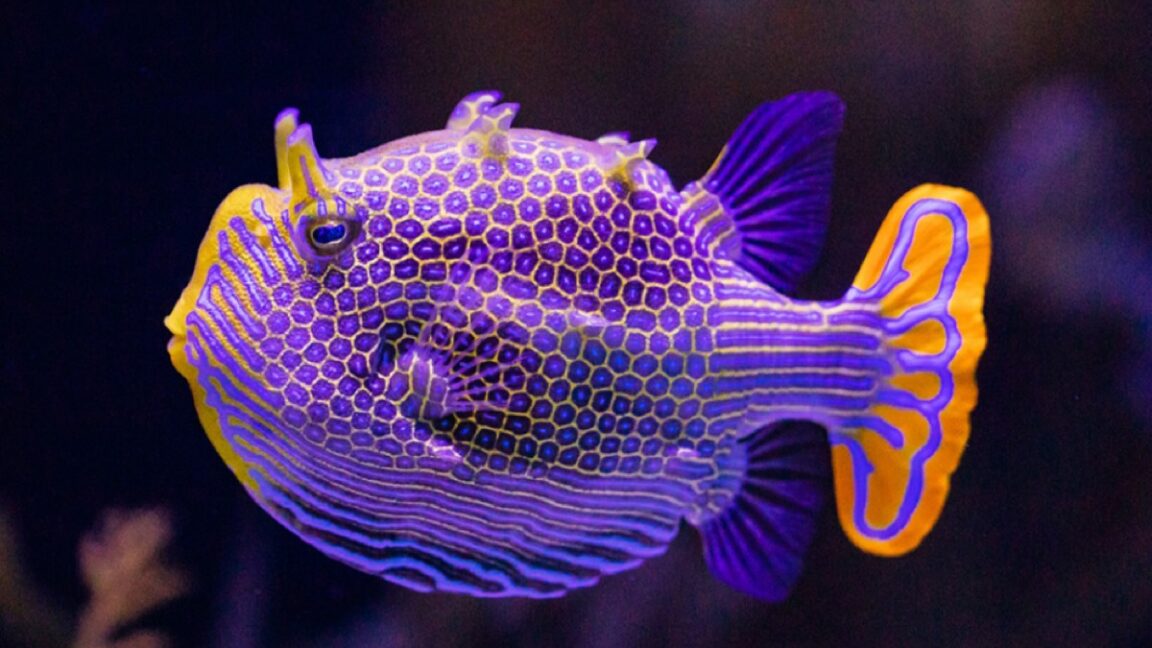Science
Researchers Uncover How Imperfections Shape Nature’s Patterns

The distinctive patterns found in nature, such as the black-and-white stripes of zebras and the spots of leopards, have long fascinated scientists. Recent research from the University of Colorado Boulder (UCB) introduces a new modeling approach that enhances the understanding of these “Turing patterns,” named after the mathematician and computer scientist Alan Turing. The findings, published in the journal Matter, suggest that incorporating imperfections can lead to more accurate representations of these natural designs.
In his 1952 paper, Turing proposed a theoretical framework based on two chemicals, known as morphogens: an activator that promotes a particular trait and an inhibitor that curbs its expression. This interaction leads to the formation of patterns as these chemicals diffuse through a medium, similar to how ink disperses in water. When the inhibitor spreads faster than the activator, the system becomes unstable, resulting in stripes or spots.
Researchers have applied Turing’s theory to various biological systems, including neuronal behavior in the brain, and have observed Turing mechanisms in patterns on zebra fish, hair follicle spacing in mice, and even the movement of ant colonies. For example, patterns formed by Azteca ants on coffee farms in Mexico exhibit characteristics of Turing patterns, showcasing the wide-ranging implications of this research.
Despite its foundational significance, Turing’s model has limitations when it comes to accurately mimicking the complexity of natural patterns. The traditional approach relies on a single length scale, which fails to account for the multi-scale structures and inherent imperfections seen in biological patterns. The latest study from UCB addresses this challenge by introducing a new concept known as diffusiopherosis, a process where colloids are transported due to differences in solute concentration.
In 2023, biochemical engineers Ankur Gupta and Benjamin Alessio developed a model that utilized diffusiopherosis to simulate the striking hexagonal patterns found on the ornate boxfish, a species native to Australia. Their simulations initially produced overly uniform hexagons, lacking the natural variance observed in real animal patterns. To rectify this, Gupta and co-author Siamak Mirfendereski adjusted the model by defining specific sizes for individual cells. This modification allowed for the emergence of broader patterns and textures that closely resemble those found in nature.
“Imperfections are everywhere in nature,” Gupta remarked. “We proposed a simple idea that can explain how cells assemble to create these variations.” This research not only deepens the understanding of natural pattern formation but also holds potential for innovative applications. Future uses may include the development of “smart” camouflage fabrics that adapt their color to blend into different environments and improved targeted drug delivery systems.
The study’s findings pave the way for further exploration of how imperfections play a critical role in the natural world and highlight the importance of nuanced modeling in biological research. As scientists continue to unlock the secrets of Turing patterns, their work may lead to groundbreaking advancements in both science and technology.
The full paper is available in the journal Matter, DOI: 10.1016/j.matt.2025.102513.
-

 Lifestyle2 months ago
Lifestyle2 months agoWinnipeg Celebrates Culinary Creativity During Le Burger Week 2025
-

 Health2 months ago
Health2 months agoMontreal’s Groupe Marcelle Leads Canadian Cosmetic Industry Growth
-

 Science2 months ago
Science2 months agoMicrosoft Confirms U.S. Law Overrules Canadian Data Sovereignty
-

 Science2 months ago
Science2 months agoTech Innovator Amandipp Singh Transforms Hiring for Disabled
-

 Education2 months ago
Education2 months agoRed River College Launches New Programs to Address Industry Needs
-

 Education2 months ago
Education2 months agoBrandon University’s Failed $5 Million Project Sparks Oversight Review
-

 Technology2 months ago
Technology2 months agoDragon Ball: Sparking! Zero Launching on Switch and Switch 2 This November
-

 Technology3 weeks ago
Technology3 weeks agoDiscord Faces Serious Security Breach Affecting Millions
-

 Technology2 months ago
Technology2 months agoGoogle Pixel 10 Pro Fold Specs Unveiled Ahead of Launch
-

 Science2 months ago
Science2 months agoChina’s Wukong Spacesuit Sets New Standard for AI in Space
-

 Technology2 months ago
Technology2 months agoWorld of Warcraft Players Buzz Over 19-Quest Bee Challenge
-

 Education2 months ago
Education2 months agoAlberta Teachers’ Strike: Potential Impacts on Students and Families
-

 Business2 months ago
Business2 months agoDawson City Residents Rally Around Buy Canadian Movement
-

 Technology3 weeks ago
Technology3 weeks agoHuawei MatePad 12X Redefines Tablet Experience for Professionals
-

 Business2 months ago
Business2 months agoNew Estimates Reveal ChatGPT-5 Energy Use Could Soar
-

 Technology2 months ago
Technology2 months agoFuture Entertainment Launches DDoD with Gameplay Trailer Showcase
-

 Science2 months ago
Science2 months agoXi Labs Innovates with New AI Operating System Set for 2025 Launch
-

 Business1 month ago
Business1 month agoRocket Lab Reports Strong Q2 2025 Revenue Growth and Future Plans
-

 Technology2 months ago
Technology2 months agoInnovative 140W GaN Travel Adapter Combines Power and Convenience
-

 Technology2 months ago
Technology2 months agoGlobal Launch of Ragnarok M: Classic Set for September 3, 2025
-

 Business2 months ago
Business2 months agoBNA Brewing to Open New Bowling Alley in Downtown Penticton
-

 Technology2 months ago
Technology2 months agoNew IDR01 Smart Ring Offers Advanced Sports Tracking for $169
-

 Technology2 months ago
Technology2 months agoArsanesia Unveils Smith’s Chronicles with Steam Page and Trailer
-

 Health2 months ago
Health2 months agoGiant Boba and Unique Treats Take Center Stage at Ottawa’s Newest Bubble Tea Shop










